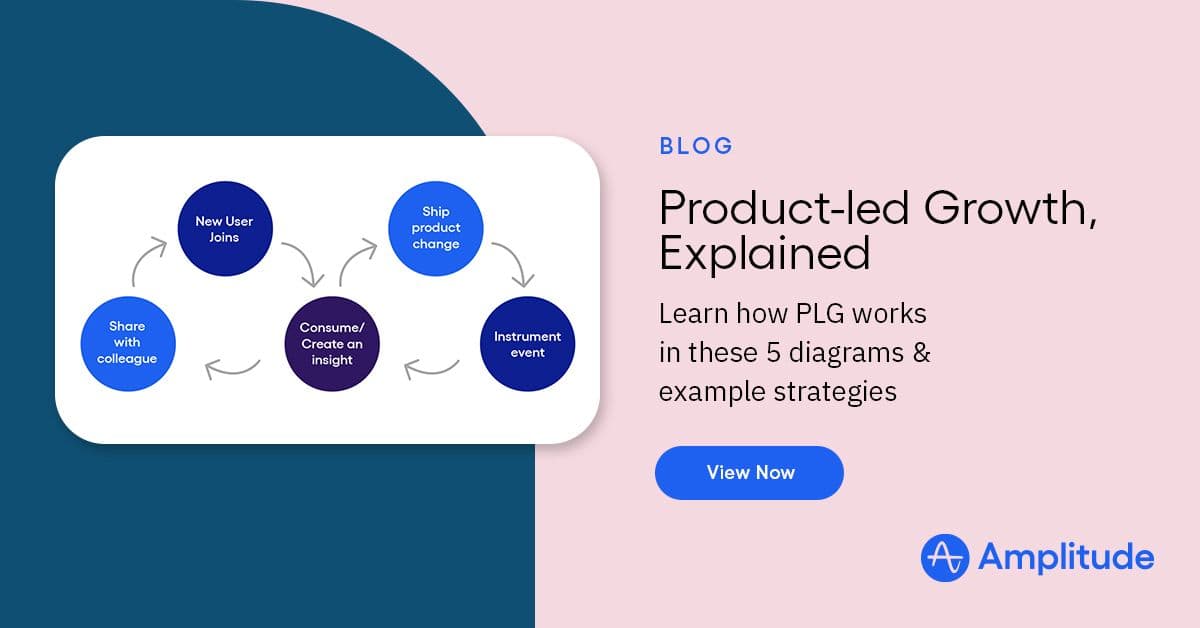Not All B2B Companies Should Be Doing Product-Led Growth
Four scenarios where you need to prioritize other work before you can start a PLG motion
Product-led growth is a great strategy, but it’s not a magic wand. In fact, if you implement product-led growth (PLG) when your organization isn’t ready, you risk doing more harm than good.
In some situations, you need to postpone PLG and work to evolve other areas of your business first. I’ll walk you through four of those situations and explain what needs to happen before you can move on to a product-led motion. But first, let’s be clear on what PLG is and what all the fuss is about.
In product-led growth, you focus most of your efforts on creating a fantastic product experience for your users. It’s the product that acquires, converts, and retains customers: users experience value, become engaged, and invite their friends to join in. In other words, the product can sell itself.
PLG automates some marketing and sales efforts. Instead of having to market the value of your product, users experience the value themselves. Instead of sales teams having to persuade individuals to buy, customers convert in a self-service way. But PLG doesn’t replace marketing and sales—it provides scalability and efficiency to both functions.
PLG lowers your customer acquisition costs, allows you to scale fast, and makes your organization more efficient. Many successful companies have already adopted PLG: Zoom, Miro, HubSpot, DocuSign, Squarespace, Asana, Amplitude, and others.
Sounds great, right? But are you ready for PLG? Not if one of these four situations applies to you:
- Your current sales and marketing-led motions aren’t predictable yet.
- Customers can’t activate your product self-serve.
- You have to communicate product value.
- Enterprise buyers have all the decision-making power.
1. Your current sales and marketing-led motions aren’t predictable yet
PLG is a disruptive ingredient. It will naturally collide with and affect the existing structures of your business. You need to get your existing sales and marketing-led motions in order before throwing PLG into the mix.
For PLG to be effective, you need to know what works and what doesn’t in your organization. Think: if we do X, we know we will get Y outcome. If your existing sales and marketing loops are not predictable and sustainable, you probably have a gap between what you think your users want from your product and what they actually want. For instance, if your product is new, you might not have been able to gather enough data to understand how customers interact with it.
Without a solid understanding of how your product works, PLG is doomed for failure. You’ll end up chasing success across all three motions. You’ll risk losing growth in your existing motions while you focus on PLG or be unable to prioritize PLG because you’re still trying to figure out what works for marketing and sales.
If your marketing or sales-led motions aren’t yet predictable, work to understand your product better. Figure out how your product should interact with the market, how it should interact with the customer, and how you will support the product internally. Once you have identified your sales and marketing loops, you can start to prototype PLG.
Work on closing the perception/reality gap and understanding the loops and engines behind your current motions before starting PLG.
2. Customers can’t activate your product self-serve
PLG relies on customers activating and reaching an “aha” moment by themselves. If they still need input from your team to reach that point, you’re not ready for PLG.
In PLG, the product drives acquisition and engagement, connecting it to monetization. But that can’t happen until product-led engagement happens.
Let’s say I start to use Asana. The experience is so efficient and effective that, before long, I get hooked and form a habit based on using Asana. I’m in an engagement loop.
My engagement drives acquisition because the more I use Asana, the more I invite team members to contribute to my Asana projects. They try out the product and end up in their own engagement loop.
To activate a user so they’re engaged with your product, you first have to get them through the setup, past an “aha” moment, and into their first habit loop. If users need input from someone on your team to reach activation (perhaps because your product has a complex setup), it adds friction to the activation process, so the loop doesn’t work.
If a human touch is necessary to activate users, it also stops you from being able to achieve profitable product-led monetization. Scaling up human input costs money. When users can activate self-serve, you can keep growing.
Twenty years ago, PLG would have been impossible for a payment processing company like Stripe. Just imagine the complexity of integrating a new payment system into your website in the early 2000s.
Stripe customers would have needed input from their team to set up the system and start using the product. Now, the abundance of no-code website-building solutions means it’s so much easier, and people can start to use Stripe without much friction, so PLG is possible.
Self-serviceability in activation and engagement journeys is the key to successful PLG, so work on allowing users to reach activation without needing a human touch.
3. You have to communicate product value
In PLG, the customer experiences the product’s value without needing input from you. However, with some types of products, it’s hard for people to understand the value they’re getting. Marketing, sales, or customer success are necessary to explain the value to the customer.
Take passive products like cybersecurity software. Cybersecurity systems act in the background, which means you don’t really notice the value you’re getting from them. If a system is working well, nothing happens on the user side. You don’t get attacked. You don’t have a security breach.
Users also don’t have to perform an action to get the reward. All they need to do is set up the system, and they’re protected.
The lack of action means customers don’t get into an engagement loop. And, just like in scenario two, if the user doesn’t get into an engagement loop, they’re not going to drive activation, monetization, or retention, so PLG is impossible.
Even if your users are receiving value from your product, if they can’t understand that value in a self-serve way, PLG is nearly impossible. Reward realization is a critical part of the journey.
Users need to be able to experience or at least learn about your product’s value without your team’s input.
4. Enterprise buyers have all the decision-making power
PLG works when end users experience value and bring their organization on board. That’s not possible in industries where the enterprise buyer holds all the power.
Historically, in most companies, an enterprise buyer would make product decisions for the whole organization. They’d talk to end users, create a requirements checklist, then select a product that met them. They’d push it down to end users (the people in their organization), whether they wanted it or not.
The problem was that what we think we need, what we say we need, and what we actually need are often very different, so buyers ended up with checklists that didn’t represent the needs of end users.
Also, just because a product meets the criteria on paper, you don’t really know if it’s a good fit for your organization without trying it out. A productivity tool might have a collaboration feature and get a tick on the checklist. However, it might not be usable or helpful for your team because of how it’s implemented. The result is a lot of wasted budgets spent on tools that don’t meet the needs of end users.
Now, things are different. Freemium plans mean that PLG products enter organizations quietly.
Let’s say some people in your organization start to use Canva. They enter an engagement loop and bring other people in to collaborate on designs.
Nearly everyone in the organization now uses Canva, and important company content files are stored in Canva accounts. It’s past the point of no return. The enterprise buyer now has to assign a budget to a Canva team account because it’s essential to the organization.
But some industries (like healthcare, government, and law) are so tightly regulated that the end users have no power to bring in a new tool. They still operate in the old way, where the enterprise buyer reigns supreme.
If this is the case in your industry, you have two options. Either wait for the balance of power to shift, as it already has in many industries. Or become a disruptor and go after end users anyway.
Instead of going after an enterprise problem, develop lower complexity use cases—small jobs to be done that benefit your end user. These simpler use cases will escalate to become enterprise problems further down the line.
Use the freemium model so you don’t compete with budgets. Your product will start to grow within organizations, and you can trigger a monetization event further down the line.
Watch for market tides to turn in your favor. Or break the rules and go after end users.
Support your growth with Amplitude
Amplitude is the number-one product analytics platform to support your growth with or without a PLG motion. Get started for free.
If you enjoyed this post, follow me on LinkedIn for more on product-led growth.

Elena Verna
Former Head of Growth, Amplitude
Elena is the former Head of Growth at Amplitude, and Growth Advisor to companies including Krisp, MongoDB, and Maze, and a Board Member at Netlify. She is also a former CMO & Advisor at Miro, SVP for Product & Growth at Malwarebytes, and SVP at SurveyMonkey. Elena has a breadth of experience in PLG models for B2B companies.
More from Elena





